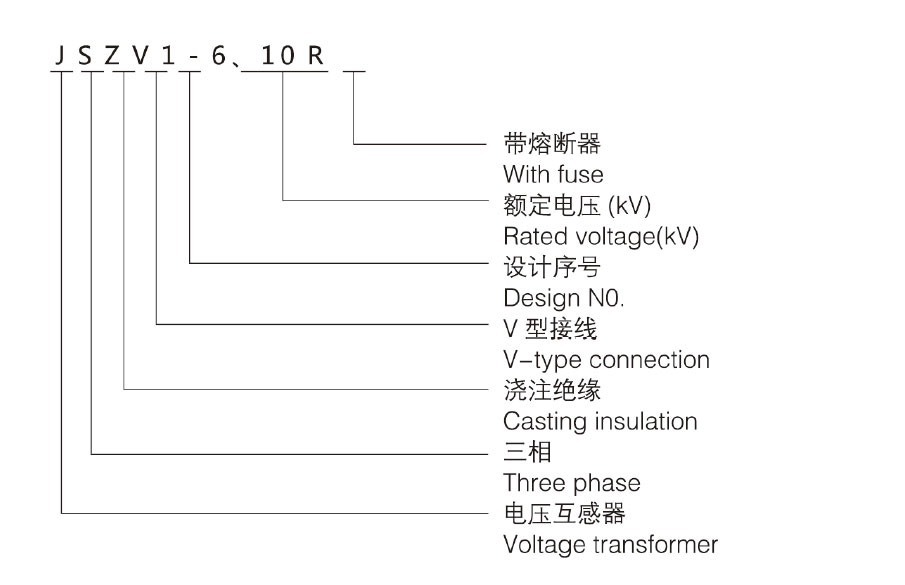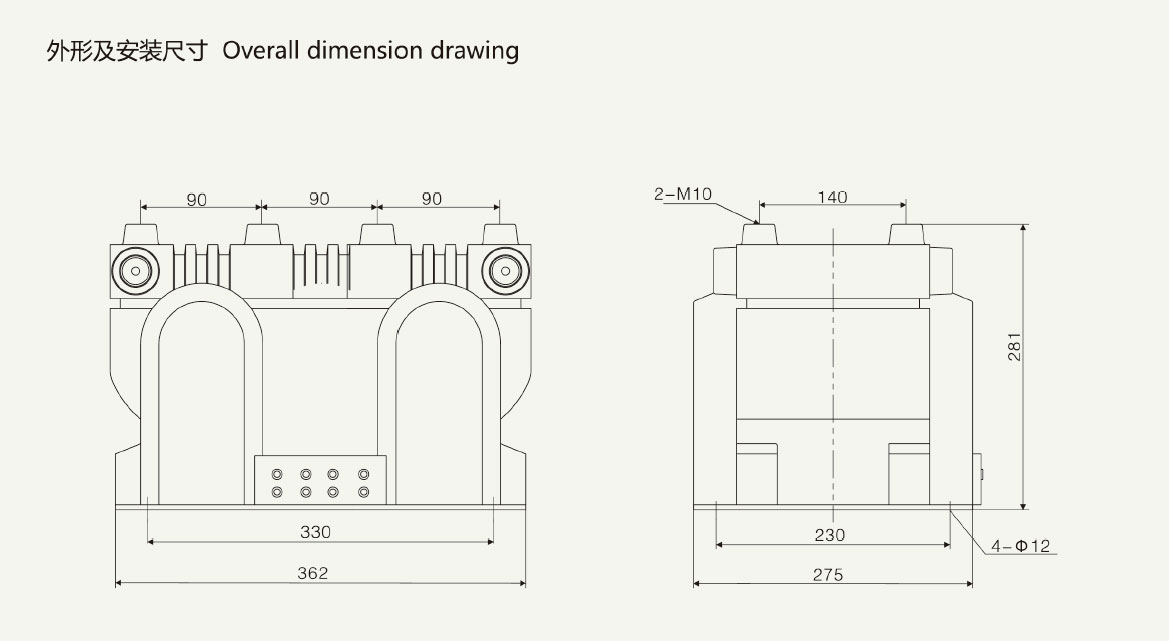JSZV1-6, 10R 3 Phase Potential Transformer is a fully enclosed product for indoor use, usually cast with epoxy resin, with good insulation performance and mechanical strength. This product is suitable for power systems with rated frequency of 50Hz or 60Hz and rated voltage of 6kV to 10kV and below, for voltage and electric energy measurement and relay protection. It is widely used in various indoor power systems, such as substations, power plants, etc.

This transformer is a new product that the primary winding is carried with fusible output protection. t is epoxy resin casted eith totally-enclosed structure, the fuse installed into the primary outlet terminal. lt is convenient for replace. The fusing current is matched with short-circuit current of the transformer. Then reduce the space, the secondary output 100V is used for voltage measurement, with 110V and 220V output voltage which are used to provide the power supply to the operating mechanism.
Power factor of load: COSΦ=0.8(lagging);
Rated frequency: 50 or 60Hz;
Anti-Pollution grade: Class ll;
Ambient temperature: -5 ℃ -40 ℃ ,daily average temperature not more than 30℃ ;
Altitude ≤ 1000m;
Standard: GB 1207-2006

| Type | Rated voltage (V) | Rated output of secondary winding (VA) | Thermal limitiong output of winding (VA) | Rated insulating level (kV) | ||
| Primary winding | Secondary winding | 0.2 Class | 0.5 Class | |||
| JSZV1-6R | 6000 | 100 | 20 | 50 | 400 | 7.2/32/60 |
| 100/100 | 15 | 20 | 200 | |||
| 100/220 | ||||||
| JSZV1-10R | 10000 | 100 | 30 | 80 | 800 | 12/42/75 |
| 100/100 | 20 | 30 | 400 | |||
| 100/220 | ||||||
Note: any special requirements can be negotiated with us
GET A QUOTE